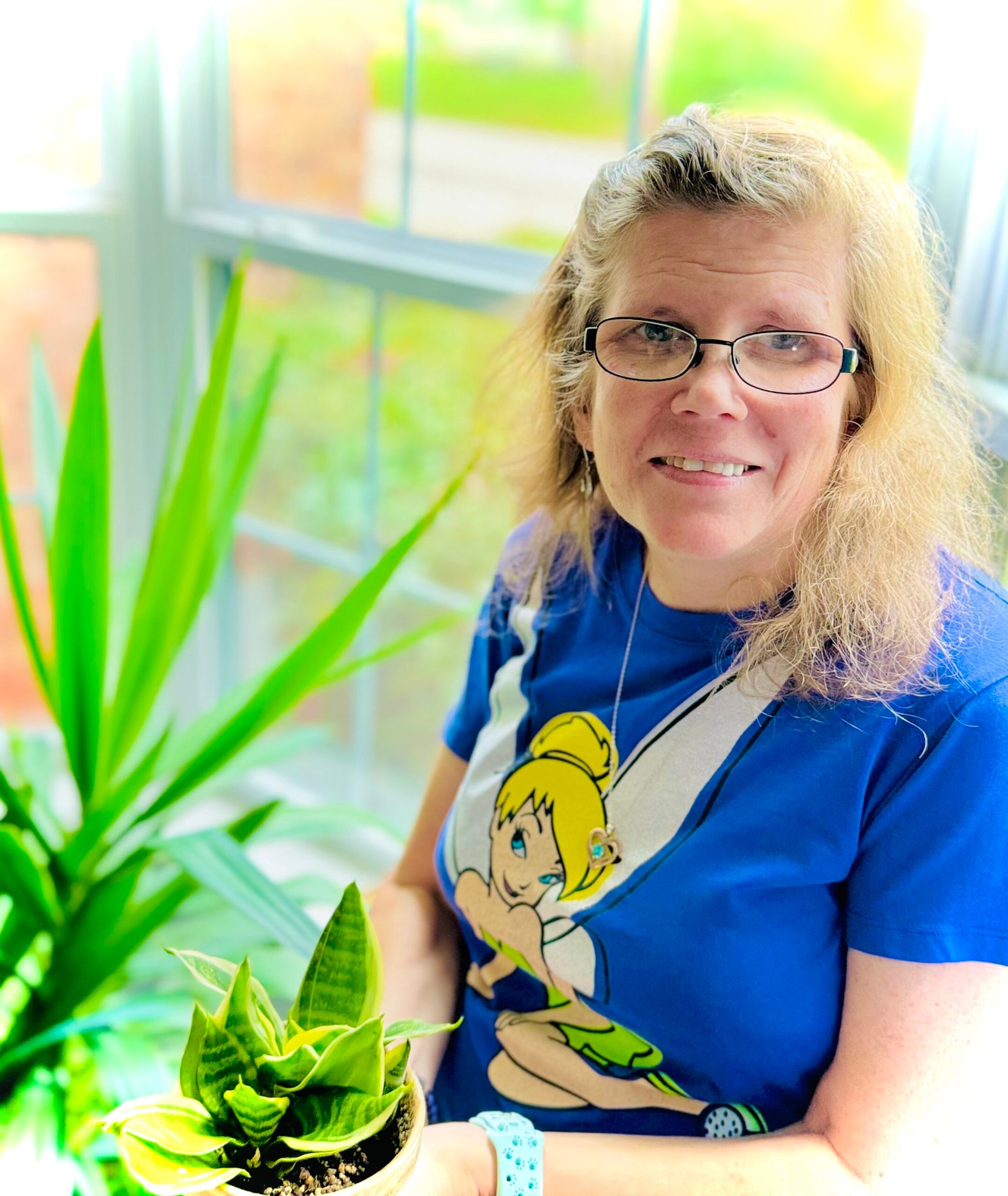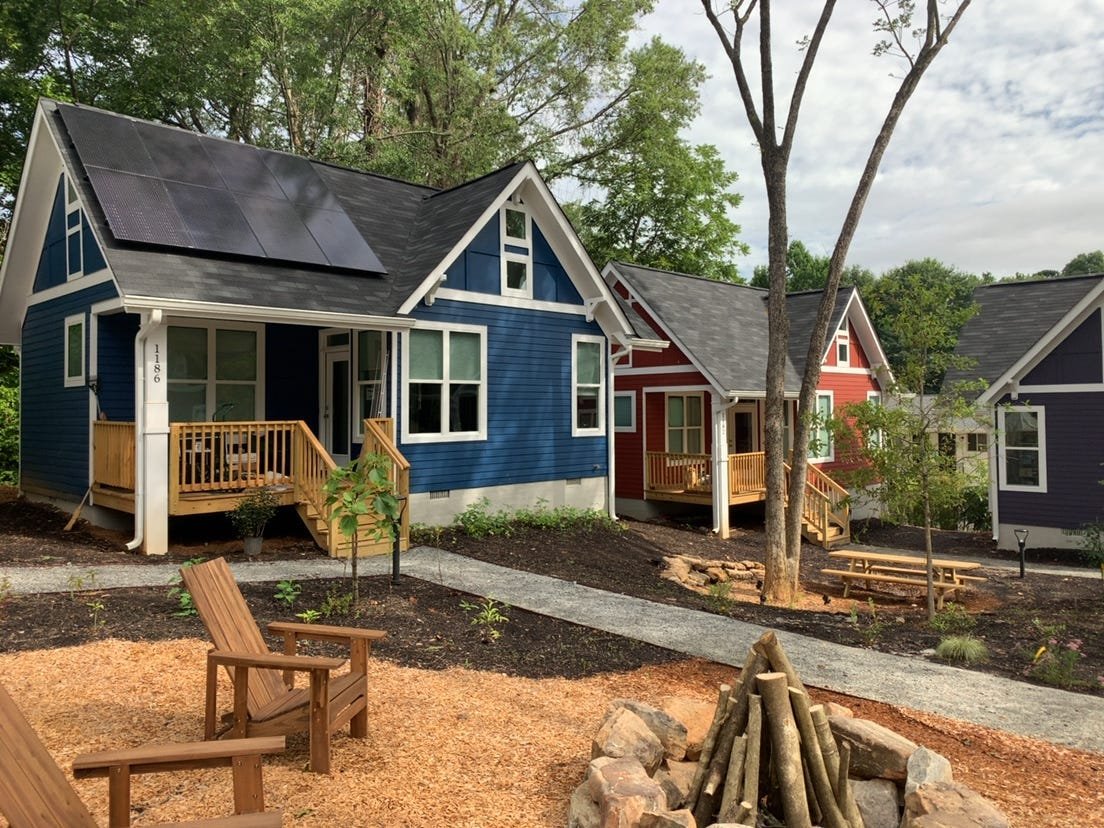
Georgia has emerged as one of the most welcoming states for the tiny house movement, offering a perfect blend of Southern charm, diverse landscapes, and progressive communities that embrace minimalist living. From the rolling hills of North Georgia to the vibrant metropolitan areas around Atlanta, the Peach State provides an ideal backdrop for those seeking to downsize their living space while maximizing their quality of life. This comprehensive Georgia Tiny Home Directory explores the thriving landscape of tiny house communities throughout Georgia, providing detailed insights into existing communities, emerging opportunities, and essential considerations for prospective tiny homeowners.
The allure of tiny house living in Georgia extends far beyond simple cost savings. The state’s mild climate, rich cultural heritage, and strong sense of community make it an attractive destination for individuals and families looking to embrace a more sustainable and intentional way of life. Whether you’re drawn to the mountain communities of North Georgia, the innovative developments around Atlanta, or the coastal charm of the southern regions, Georgia offers a tiny home community to match every lifestyle preference and budget.
Table of Contents
•Overview of Tiny House Communities in Georgia
Discover the Georgia Tiny Home Directory which serves as an invaluable resource for anyone interested in tiny living options.
•North Georgia Mountain Communities
•Metro Atlanta Tiny Home Communities
•Central Georgia Tiny House Options
•South Georgia and Coastal Communities
•Other Notable Georgia Tiny Home Locations
•Benefits of Living in a Tiny House Community
•Financial Freedom and Affordability
•Sustainable Living and Reduced Environmental Impact
•Strong Sense of Community and Connection
•Unique Features of Georgia Tiny Homes
•Innovative Design and Space Maximization
•Sustainable Practices and Eco-Friendly Materials
•Key Elements to Consider When Choosing a Tiny House Community
•Community Rules and Regulations
•Available Amenities in Tiny Home Communities
•Transportation and Accessibility
•The Growing Popularity of Tiny House Living in Georgia
•Reasons Georgians are Choosing Tiny Homes
•Environmental Impact of Tiny House Communities
•Resources for Aspiring Tiny Homeowners in Georgia
•Financial Assistance Programs for Tiny Homes
•Legal and Zoning Considerations
•Educational Resources and Community Engagement
•FAQs
Key Takeaways
Georgia’s tiny house movement represents a significant shift toward sustainable, affordable, and community-oriented living. The state offers diverse tiny home communities ranging from luxury mountain retreats to innovative urban developments, each providing unique amenities and lifestyle opportunities. Prospective tiny homeowners will find comprehensive support through established builders, progressive zoning regulations, and a growing network of like-minded individuals committed to minimalist living.
The financial benefits of tiny house living in Georgia are substantial, with many communities offering affordable lot leases, reduced utility costs, and minimal maintenance requirements. Environmental consciousness drives much of the movement, as tiny homes typically consume significantly less energy and resources compared to traditional housing. The strong sense of community fostered in these developments creates lasting relationships and shared experiences that enhance the overall quality of life for residents.
Georgia’s regulatory environment continues to evolve in favor of tiny house living, with many counties adopting progressive zoning ordinances that accommodate various types of tiny homes. The state’s commitment to affordable housing solutions and sustainable development makes it an ideal location for those considering the transition to tiny house living.
Overview of Tiny House Communities in Georgia
Georgia’s diverse geography and welcoming regulatory environment have fostered the development of numerous tiny house communities across the state. From the Appalachian foothills in the north to the coastal plains in the south, these communities offer residents the opportunity to embrace minimalist living while maintaining access to modern amenities and strong social connections. The state’s mild climate allows for year-round outdoor activities, making tiny house living particularly appealing to those who value an active lifestyle and connection with nature.
The tiny house movement in Georgia has gained significant momentum over the past decade, driven by rising housing costs, environmental concerns, and a growing desire for simpler living. State and local governments have responded positively to this trend, with many jurisdictions updating their zoning codes to accommodate tiny homes and alternative housing solutions. This progressive approach has attracted developers, builders, and residents from across the country, establishing Georgia as a leader in the tiny house movement.
North Georgia Mountain Communities
The mountainous region of North Georgia offers some of the most scenic and desirable tiny house communities in the state. These communities capitalize on the area’s natural beauty, cooler climate, and proximity to outdoor recreation opportunities. The region’s established tourism infrastructure and welcoming local communities make it an ideal location for both permanent residents and seasonal visitors seeking the tiny house lifestyle.
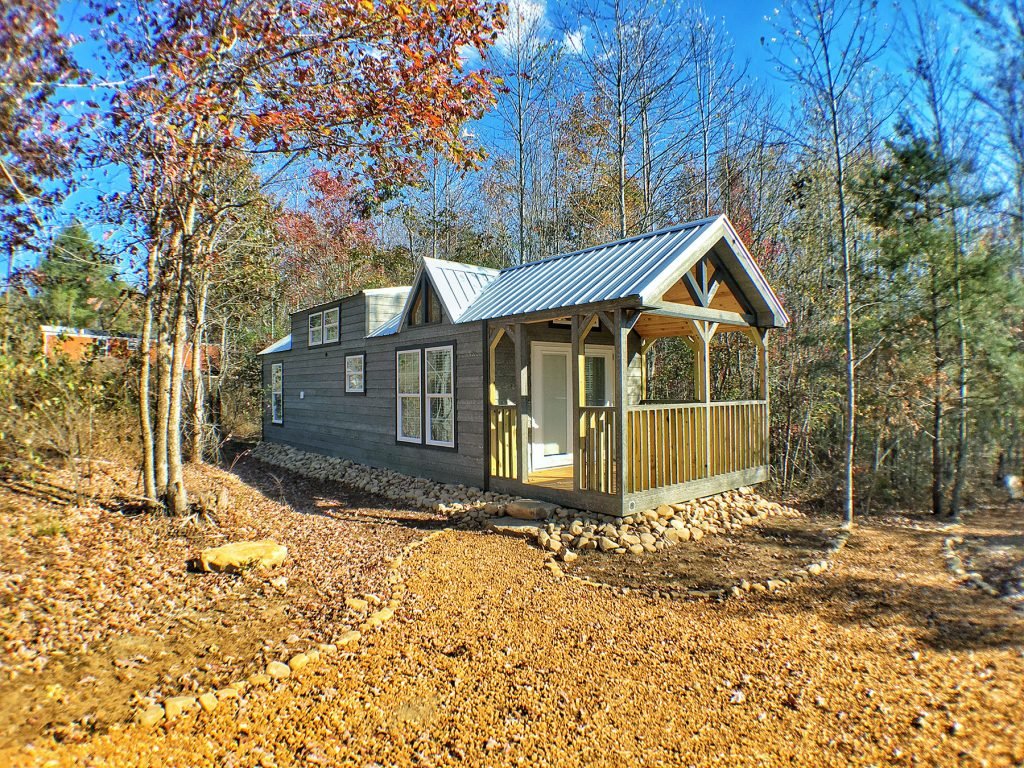
Little River Escape – Cloudland, GA: Nestled atop Lookout Mountain in Cloudland, Georgia, Little River Escape represents the pinnacle of mountain tiny house living. This private gated community spans over 50 acres of pristine woodland along the East Fork of the Little River, offering residents an unparalleled combination of natural beauty and modern convenience. The community features carefully prepared lots ranging from three-quarters to over one acre, each equipped with essential utilities including electricity, water, and septic systems. [1]
The community’s amenities reflect its commitment to outdoor living and environmental stewardship. Residents enjoy access to a common guest house for visiting family and friends, a community swimming pool for relaxation and recreation, and extensive hiking trails that wind through the property’s diverse ecosystems. The Little River provides opportunities for fishing, swimming, and peaceful contemplation, while the elevated location offers stunning views of the surrounding mountains and valleys.
Little River Escape operates on a lease model, with five-year terms available for lots priced between 395and395 and 395and525 per month, depending on size and location within the community. This affordable approach makes mountain living accessible to a broader range of individuals and families while maintaining the community’s exclusive character. The development also offers purchase options for adjacent properties, providing flexibility for those seeking permanent ownership. Google Maps
Sugar Mill Creek at Lake Burton: Located in the heart of North Georgia’s lake country, Sugar Mill Creek at Lake Burton offers a luxury tiny home experience that combines resort-style amenities with the tranquility of mountain living. This private, gated community features 51 carefully planned park model tiny home sites spread across 12 acres of beautifully landscaped property. The community’s proximity to Lake Burton provides residents with direct access to one of Georgia’s most pristine mountain lakes, known for its crystal-clear waters and excellent recreational opportunities. [2]
The community’s amenities are designed to enhance the tiny house lifestyle while fostering strong social connections among residents. The on-site clubhouse serves as a central gathering place for community events, social activities, and shared meals. Private driveways and dedicated parking areas ensure convenience and privacy for each resident, while the community’s dog park provides a safe and enjoyable space for four-legged family members. Strategically placed fire pits throughout the property create intimate gathering spaces where residents can enjoy Georgia’s mild evenings and build lasting friendships.
Sugar Mill Creek’s “Try Before You Buy” program sets it apart from other tiny house communities. Prospective residents can rent one of the community’s Berry model homes to experience tiny house living firsthand before making a long-term commitment. This innovative approach reduces the uncertainty often associated with downsizing and helps ensure that new residents are well-prepared for the transition to tiny house living. The community also maintains a three-bedroom luxury apartment in the clubhouse for extended stays and special occasions. Google Maps
Waterside at Blue Ridge: This emerging community near Blue Ridge, Georgia, represents the next generation of tiny home developments in the North Georgia mountains. Waterside combines the appeal of lakefront living with the convenience of modern tiny home amenities, creating an environment that appeals to both full-time residents and vacation home owners. The community’s strategic location provides easy access to the Blue Ridge Scenic Railway, numerous state parks, and the charming downtown Blue Ridge area with its shops, restaurants, and cultural attractions. [3]
The development emphasizes environmental sustainability and responsible land use, incorporating native landscaping, energy-efficient infrastructure, and water conservation measures throughout the property. Residents benefit from the community’s commitment to preserving the natural character of the area while providing modern conveniences and recreational opportunities. The proximity to the Toccoa River and surrounding national forest lands offers endless opportunities for outdoor recreation, from fishing and kayaking to hiking and wildlife observation.
Metro Atlanta Tiny Home Communities
The Atlanta metropolitan area has become a hotbed of innovation in the tiny house movement, with several groundbreaking communities that address both housing affordability and social equity. These developments demonstrate how tiny house communities can serve diverse populations while contributing to urban revitalization and sustainable development goals.
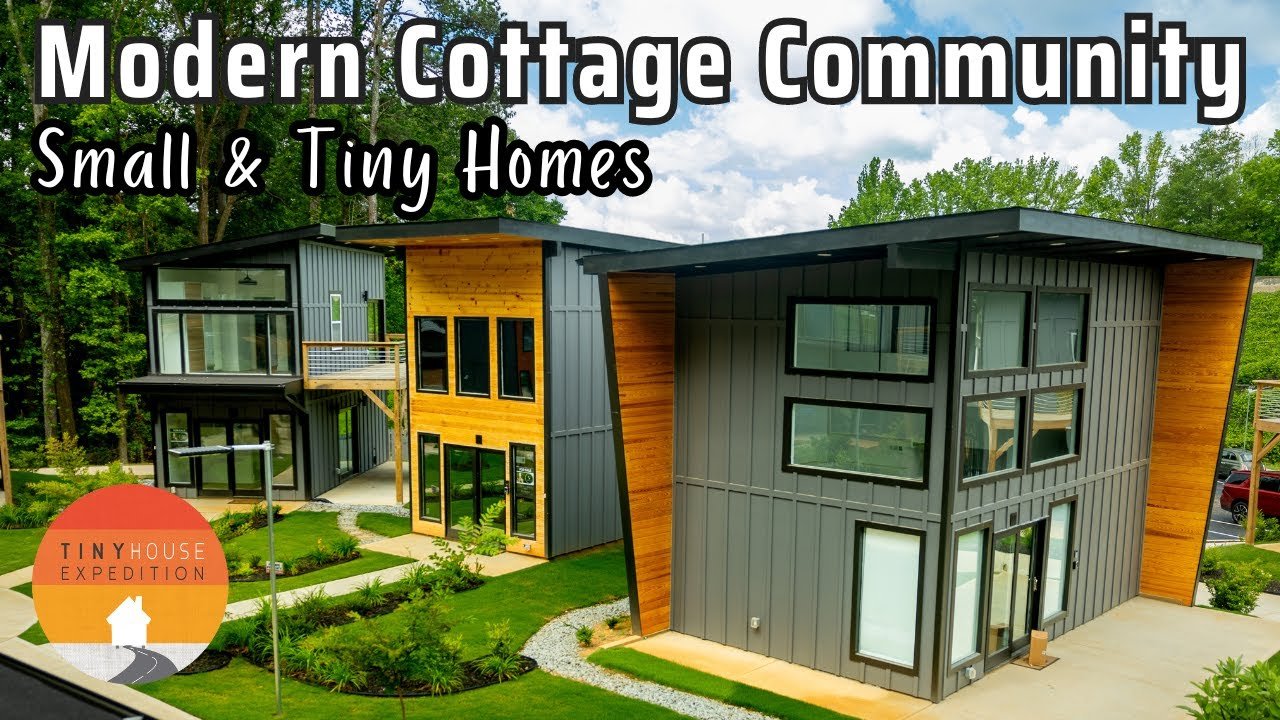
South Park Cottages – College Park: Developed by Booker T. Washington through Techie Homes, Inc., South Park Cottages represents a historic achievement as the first Black-developed micro-home community in Georgia and the seventh largest tiny home development nationwide. Located in College Park, approximately ten minutes from Hartsfield-Jackson Atlanta International Airport, this innovative community addresses the critical need for affordable housing in the Atlanta metropolitan area while fostering entrepreneurship and community development. [4]
The community, affectionately known as “The Park” by residents and developers, features modern cottage-style homes ranging from 625 to 675 square feet. Each unit includes two bedrooms and one bathroom, challenging traditional notions of tiny house design by providing comfortable living spaces for families and individuals alike. The homes are priced between 230,000and230,000 and 230,000and250,000, making homeownership accessible to middle-income families who might otherwise be priced out of the Atlanta housing market. [5]
South Park Cottages goes beyond providing housing by incorporating technology and entrepreneurship into its community model. The development includes a technology lab where residents can access digital resources, participate in coding workshops, and develop business skills. This innovative approach reflects the developer’s commitment to creating not just a housing community but a platform for economic empowerment and social mobility. The community’s success has attracted national attention and serves as a model for similar developments across the country. Google Maps
The Cottages on Vaughan – Clarkston: Located in the diverse and welcoming city of Clarkston, The Cottages on Vaughan represents Georgia’s first traditional tiny home village designed for permanent residential living. This community addresses the growing demand for affordable housing options in the Atlanta metropolitan area while maintaining the charm and character that make tiny house living appealing. Clarkston’s reputation as a welcoming community for refugees and immigrants adds a unique multicultural dimension to this tiny house development. [6]
The community features thoughtfully designed tiny homes that maximize space efficiency while providing all the amenities necessary for comfortable daily living. Each home includes modern kitchen facilities, full bathroom amenities, climate control systems, and dedicated parking areas. The development’s location in Clarkston provides residents with easy access to Atlanta’s employment centers while maintaining a small-town atmosphere that fosters community connections and social interaction.
Residents of The Cottages on Vaughan benefit from Clarkston’s extensive public transportation connections, diverse dining options, and strong community support networks. The city’s commitment to inclusivity and cultural diversity creates an environment where tiny house residents can thrive while contributing to the broader community’s social and economic vitality. Google Maps
Serenbe Community – Chattahoochee Hills: While not exclusively a tiny house community, Serenbe represents one of Georgia’s most innovative approaches to sustainable community development and offers numerous opportunities for tiny house enthusiasts. Located in Chattahoochee Hills, just 30 minutes southwest of Atlanta, Serenbe combines residential living with organic farming, environmental conservation, and cultural programming to create a unique lifestyle experience. [7]
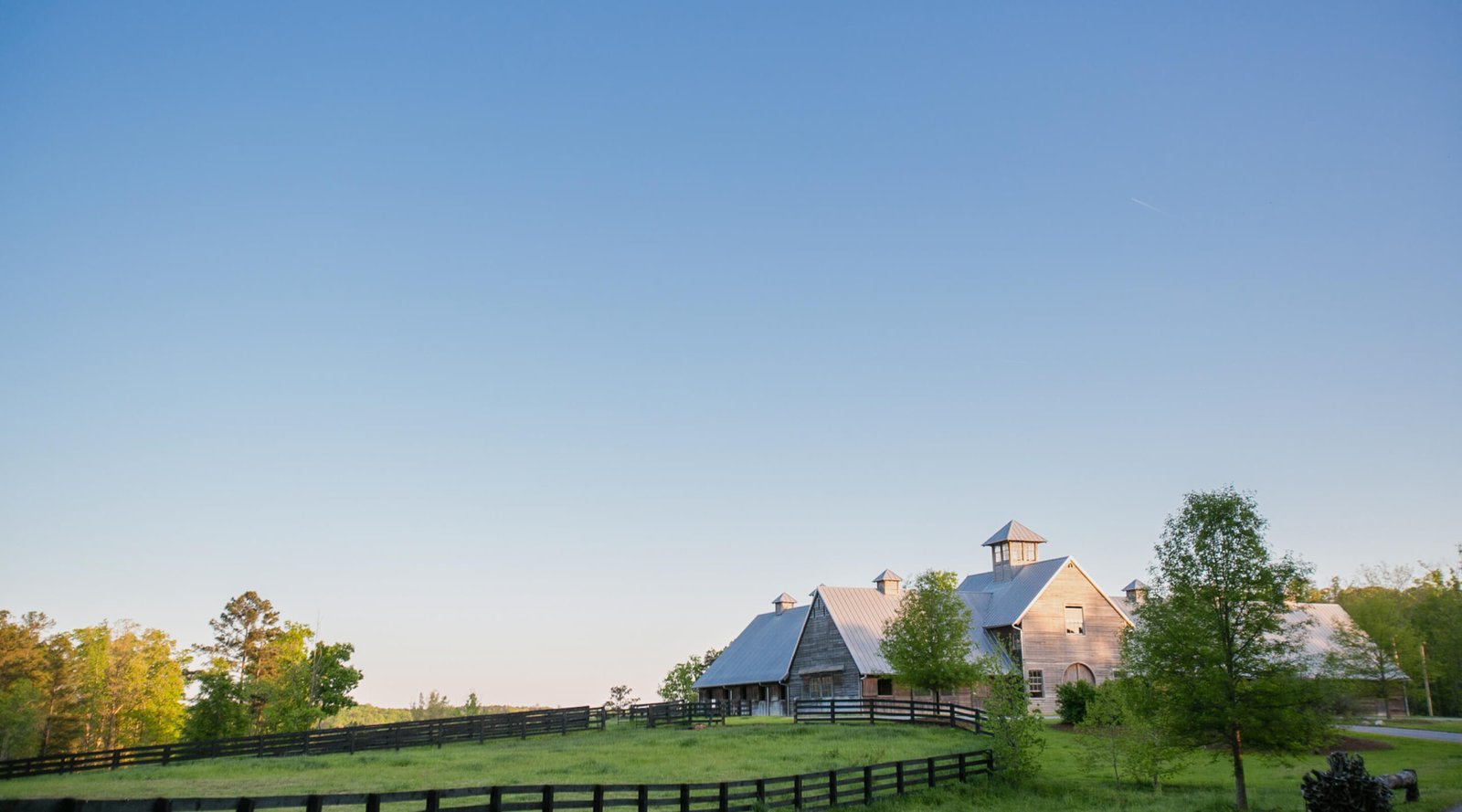
The community spans over 1,000 acres and includes a variety of housing options, from traditional single-family homes to smaller cottages and accessory dwelling units that appeal to those interested in downsized living. Serenbe’s commitment to sustainability, local food production, and environmental stewardship aligns closely with the values that drive many people to tiny house living. The community features an organic farm, extensive trail systems, art galleries, restaurants, and event spaces that create a rich cultural environment for residents and visitors alike.
Serenbe’s amenities are extensive and designed to support a holistic lifestyle that emphasizes wellness, creativity, and environmental responsibility. Residents enjoy access to a swimming pool, fitness center, spa facilities, yoga studio, and horse stables. The community’s organic farm provides fresh produce for residents and local restaurants, while cooking classes and wine tastings create opportunities for social interaction and skill development. The outdoor amphitheater hosts concerts and cultural events throughout the year, contributing to the community’s vibrant social calendar. Google Maps
Central Georgia Tiny House Options
Central Georgia offers a growing number of tiny house opportunities that combine small-town charm with access to larger metropolitan areas. These communities often provide more affordable options while maintaining strong connections to Georgia’s agricultural heritage and natural resources.
Augusta Area Developments: The Augusta metropolitan area has emerged as a significant center for tiny house development, with several innovative projects addressing different demographic needs and housing challenges. Bridge Builder Communities has received approval to develop a 25-unit tiny home village specifically designed to support young adults aging out of the foster care system. This groundbreaking project demonstrates how tiny house communities can address specific social needs while providing stable, affordable housing solutions. [8]
The Augusta area’s strategic location along the Savannah River and its proximity to both Atlanta and the South Carolina coast make it an attractive location for tiny house development. The region’s lower cost of living compared to metropolitan Atlanta, combined with growing employment opportunities in healthcare, technology, and manufacturing, creates favorable conditions for tiny house communities that serve working professionals and retirees alike.
Ridge Spring RV and Tiny Home Community: Located in the Augusta metropolitan area, Ridge Spring represents a premium approach to tiny home community development that combines the flexibility of RV living with the permanence and community feel of traditional neighborhoods. This long-term RV and tiny home park caters to residents seeking a maintenance-free lifestyle with access to modern amenities and recreational opportunities. [9]
The community’s design emphasizes both privacy and social interaction, with spacious lots that provide room for outdoor living while maintaining common areas that encourage community engagement. Ridge Spring’s location provides easy access to Augusta’s employment centers, medical facilities, and cultural attractions while offering a peaceful retreat from urban pressures.
South Georgia and Coastal Communities
South Georgia’s coastal regions and agricultural areas offer unique opportunities for tiny house living that emphasize connection with nature, sustainable agriculture, and coastal lifestyle benefits. These communities often feature lower costs of living and access to recreational opportunities that include both inland and coastal activities.
Savannah Area Initiatives: The Savannah metropolitan area has embraced tiny house development as part of broader efforts to address housing affordability and homelessness. The Cove at Dundee represents a successful model for using tiny homes to provide transitional housing for homeless veterans, with 46 completed units that offer stable housing combined with supportive services. This project demonstrates the versatility of tiny house communities in addressing diverse housing needs while building strong support networks. [10]
The success of The Cove at Dundee has inspired additional tiny house projects throughout the Savannah area, including developments that serve general populations seeking affordable housing options. The region’s mild climate, rich history, and growing tourism industry create favorable conditions for tiny house communities that appeal to both permanent residents and seasonal visitors.
Columbus Area Developments: The Columbus metropolitan area, located along Georgia’s western border with Alabama, offers growing opportunities for tiny house development that capitalize on the region’s affordable land costs and strategic location. Southern Pines Tiny Home Community represents an emerging development that emphasizes connection with nature and outdoor recreation opportunities. [11]
Columbus’s location along the Chattahoochee River provides access to water-based recreation, while the area’s proximity to Fort Moore (formerly Fort Benning) creates opportunities for tiny house communities that serve military families and veterans. The region’s lower cost of living and growing economic diversification make it an attractive location for tiny house developments that emphasize affordability and community connection.
Other Notable Georgia Tiny Home Locations
Mustard Seed Tiny Homes – Buford: While primarily a builder rather than a community, Mustard Seed Tiny Homes has become a significant force in Georgia’s tiny house movement. Located in Buford, just outside Atlanta, this premium tiny house builder specializes in modular tiny homes that can be placed in various communities throughout the state. Their innovative designs and commitment to quality construction have made them a preferred partner for many Georgia tiny house communities. [12]
Dragon Tiny Homes – Snellville: As Georgia’s largest tiny home builder, Dragon Tiny Homes has played a crucial role in making tiny house living accessible to Georgia residents. Based in Snellville, the company operates from an expansive indoor facility where they craft tiny homes of all sizes and configurations. Their expertise in navigating Georgia’s building codes and zoning requirements has been instrumental in the development of many tiny house communities throughout the state. [13]
Benefits of Living in a Tiny House Community
The decision to join a tiny house community in Georgia offers numerous advantages that extend far beyond simple cost savings. These benefits encompass financial, environmental, and social dimensions that contribute to an enhanced quality of life and greater personal satisfaction.
Financial Freedom and Affordability
Tiny house living in Georgia provides substantial financial advantages that can transform residents’ economic outlook and lifestyle choices. The reduced housing costs associated with tiny homes free up significant portions of household budgets for other priorities, including travel, education, healthcare, and retirement savings. Most Georgia tiny house communities offer lot lease options ranging from 300to300 to 300to600 per month, dramatically lower than traditional housing costs in comparable locations.
The lower utility costs associated with tiny homes represent another significant financial benefit. Georgia’s mild climate reduces heating and cooling expenses, while the smaller space requirements mean lower electricity, water, and waste management costs. Many tiny house communities in Georgia incorporate energy-efficient infrastructure and renewable energy options that further reduce monthly expenses for residents.
Maintenance costs for tiny homes are substantially lower than traditional housing, both due to the smaller space and the newer construction standards typically employed in tiny house development. Many Georgia tiny house communities include landscaping, exterior maintenance, and common area upkeep in their monthly fees, eliminating many of the unexpected expenses that can burden traditional homeowners.
The financial freedom provided by tiny house living enables residents to pursue career changes, entrepreneurial ventures, or early retirement that might not be feasible with traditional housing expenses. Many Georgia tiny house residents report being able to work part-time, pursue creative endeavors, or engage in volunteer activities that provide personal fulfillment rather than simply economic necessity.
Sustainable Living and Reduced Environmental Impact
Georgia’s tiny house communities are at the forefront of sustainable living practices that significantly reduce environmental impact while demonstrating practical approaches to conservation and resource management. The smaller footprint of tiny homes naturally reduces energy consumption, water usage, and waste generation compared to traditional housing options.
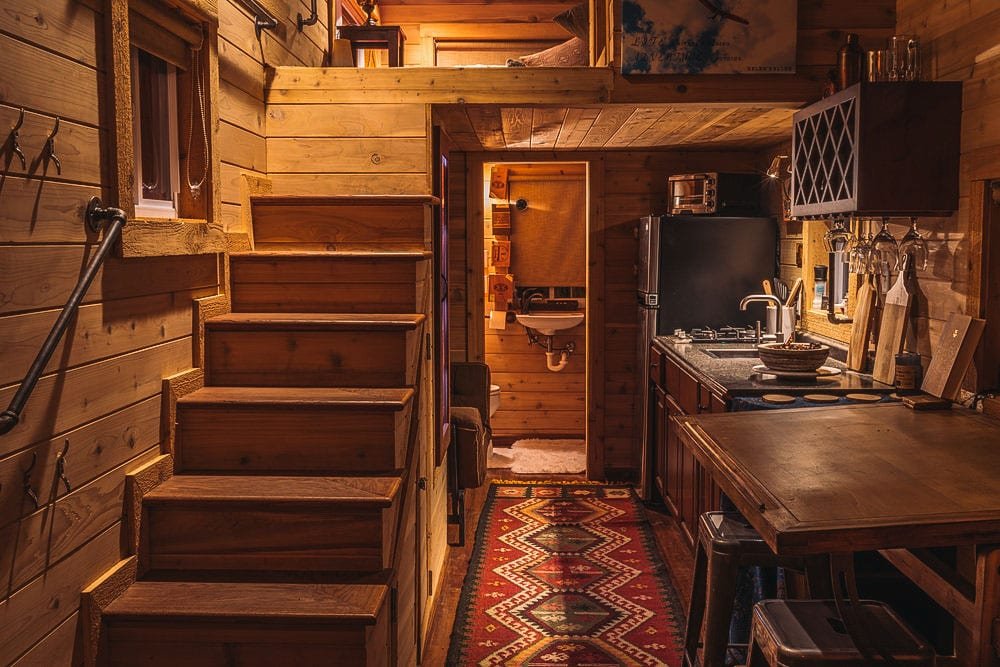
Many Georgia tiny house communities incorporate renewable energy systems, including solar panels, wind generation, and geothermal heating and cooling systems. These technologies not only reduce environmental impact but also provide long-term cost savings for residents. The state’s abundant sunshine makes solar energy particularly viable for tiny house communities throughout Georgia.
Water conservation is another key focus of Georgia tiny house communities, with many incorporating rainwater harvesting systems, greywater recycling, and drought-resistant landscaping. These practices are particularly important in Georgia, where water resources face increasing pressure from population growth and climate variability.
The emphasis on sustainable living in tiny house communities often extends to transportation choices, with many residents adopting walking, cycling, and public transportation as primary means of getting around. Georgia’s growing network of bike trails and public transportation options makes car-free or car-light living increasingly feasible, particularly in communities near Atlanta and other metropolitan areas.
Strong Sense of Community and Connection
One of the most significant benefits of tiny house community living in Georgia is the strong sense of connection and mutual support that develops among residents. The shared experience of choosing alternative housing creates immediate common ground, while the community-oriented design of most developments encourages regular interaction and collaboration.
Georgia tiny house communities often organize regular social events, skill-sharing workshops, and collaborative projects that strengthen community bonds and provide opportunities for personal growth. These activities range from gardening and cooking classes to technology workshops and artistic collaborations. The smaller scale of tiny house communities makes it easier for residents to get to know their neighbors and develop meaningful relationships.
The mutual support networks that develop in tiny house communities provide both practical and emotional benefits for residents. Neighbors often share tools, skills, and resources, creating informal economies that reduce individual costs while strengthening community ties. During emergencies or personal challenges, the close-knit nature of tiny house communities ensures that residents have access to immediate support and assistance.
Many Georgia tiny house communities also serve as platforms for broader social and environmental activism, with residents collaborating on sustainability initiatives, affordable housing advocacy, and community development projects. This engagement provides residents with opportunities to make meaningful contributions to larger social goals while building skills and connections that enhance their personal and professional lives.
Unique Features of Georgia Tiny Homes
Georgia’s tiny house communities showcase innovative design approaches and construction techniques that reflect both the state’s climate conditions and cultural preferences. These unique features distinguish Georgia tiny homes from developments in other regions while addressing the specific needs and desires of residents.
Innovative Design and Space Maximization
Georgia tiny house builders have developed sophisticated approaches to space maximization that create surprisingly spacious and functional living environments within compact footprints. Multi-functional furniture, creative storage solutions, and flexible room configurations allow residents to adapt their spaces to changing needs and activities throughout the day.
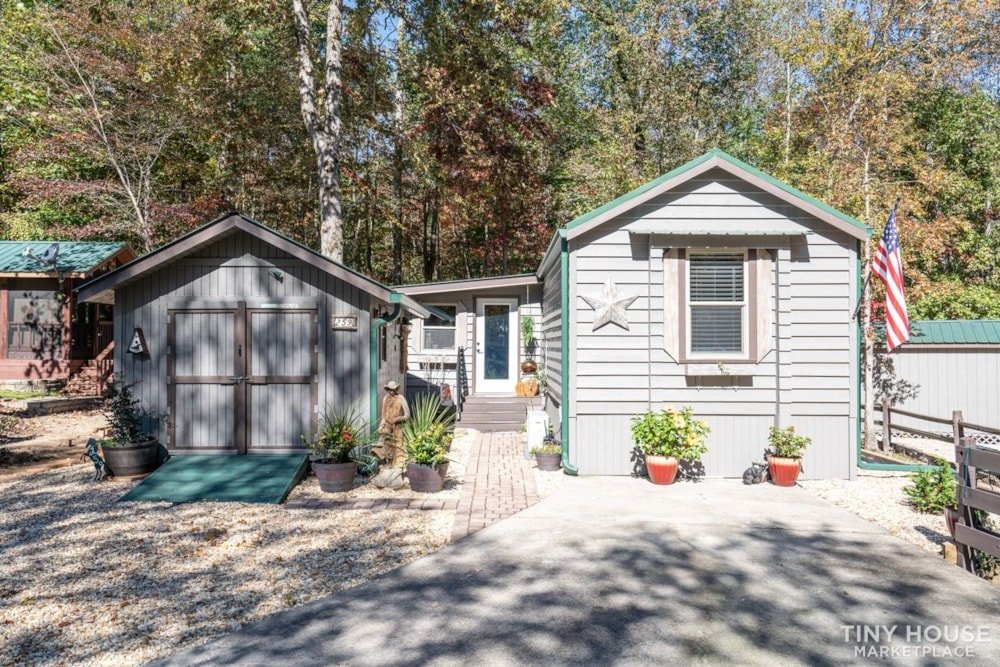
The use of vertical space is particularly important in Georgia tiny home design, with many homes featuring loft bedrooms, high ceilings, and tall windows that create a sense of openness and connection with the outdoors. Skylights and clerestory windows are common features that bring natural light deep into tiny home interiors while maintaining privacy and energy efficiency.
Outdoor living spaces are integral to Georgia tiny home design, reflecting the state’s mild climate and outdoor-oriented culture. Many homes feature covered porches, decks, and patios that effectively extend the living space while providing opportunities for gardening, entertaining, and relaxation. These outdoor areas often include outdoor kitchens, fire pits, and seating areas that serve as extensions of the interior living space.
Sustainable Practices and Eco-Friendly Materials
Georgia tiny house communities prioritize the use of sustainable building materials and construction practices that minimize environmental impact while creating healthy living environments for residents. Locally sourced materials are preferred when possible, reducing transportation costs and supporting regional economies while ensuring that homes are well-adapted to local climate conditions.
Energy-efficient appliances and systems are standard features in Georgia tiny homes, including high-efficiency HVAC systems, LED lighting, and ENERGY STAR-rated appliances. Many communities also incorporate smart home technologies that allow residents to monitor and optimize their energy usage while maintaining comfort and convenience.
The use of non-toxic building materials and finishes is another priority in Georgia tiny house construction, with builders selecting paints, adhesives, and furnishings that minimize indoor air pollution and create healthier living environments. This attention to indoor air quality is particularly important in tiny homes, where the smaller space can concentrate pollutants if proper materials and ventilation are not employed.
Climate-Adapted Features
Georgia’s humid subtropical climate requires specific design considerations that ensure comfort and durability in tiny homes. Proper ventilation is crucial for managing humidity levels and preventing moisture-related problems, with many Georgia tiny homes featuring whole-house ventilation systems, ceiling fans, and strategically placed windows that promote natural airflow.
Insulation strategies in Georgia tiny homes must balance energy efficiency with moisture management, often incorporating vapor barriers and breathable materials that prevent condensation while maintaining thermal performance. The state’s hot summers and mild winters require HVAC systems that can efficiently handle cooling loads while providing adequate heating during occasional cold snaps.
Storm resistance is another important consideration in Georgia tiny home design, with builders incorporating features that can withstand high winds, heavy rain, and occasional severe weather events. These features include reinforced anchoring systems, impact-resistant windows, and drainage systems that prevent water damage during heavy rainfall events.
Key Elements to Consider When Choosing a Tiny House Community
Selecting the right tiny house community in Georgia requires careful consideration of multiple factors that will significantly impact your daily life, financial situation, and long-term satisfaction with tiny house living. Understanding these key elements will help ensure that your chosen community aligns with your personal goals, lifestyle preferences, and practical needs.
Community Rules and Regulations
Each tiny house community in Georgia operates under its own set of rules and regulations that govern everything from architectural standards to pet policies and guest restrictions. Understanding these rules before committing to a community is essential for ensuring compatibility with your lifestyle and avoiding future conflicts or disappointments.
Architectural guidelines typically specify acceptable tiny home sizes, exterior materials, color schemes, and design elements that maintain the community’s aesthetic character. Some communities require homes to be built by approved builders or meet specific certification standards, while others allow more flexibility in design and construction approaches. Understanding these requirements early in your planning process will help you budget appropriately and select builders or designs that meet community standards.
Pet policies vary significantly among Georgia tiny house communities, with some welcoming all types of pets while others restrict certain breeds, sizes, or numbers of animals. If you have pets or plan to acquire them, carefully review community pet policies and associated fees or deposits that may be required.
Guest and visitor policies can significantly impact your social life and family relationships, particularly if you frequently host overnight guests or extended family visits. Some communities limit the duration of guest stays or require advance notification for visitors, while others provide guest accommodations or have more flexible policies that accommodate various social needs.
Available Amenities in Tiny Home Communities
The amenities offered by tiny house communities can significantly enhance your quality of life while providing opportunities for social interaction, recreation, and personal development. Georgia communities offer a wide range of amenities that reflect both regional preferences and the specific demographics they serve.
Common recreational amenities in Georgia tiny house communities include swimming pools, fitness centers, walking trails, and outdoor gathering areas with fire pits or grills. These facilities provide opportunities for exercise, relaxation, and social interaction while reducing the need for expensive gym memberships or recreational facility fees.
Practical amenities such as community gardens, tool libraries, and workshop spaces can significantly reduce individual costs while fostering collaboration and skill-sharing among residents. Many Georgia communities also provide package receiving services, guest parking areas, and common meeting spaces that address the practical challenges of tiny house living.
Technology amenities are increasingly important in modern tiny house communities, with many Georgia developments offering high-speed internet access, co-working spaces, and technology labs that support remote work and digital entrepreneurship. These amenities are particularly valuable for residents who work from home or operate online businesses.
Transportation and Accessibility
The location and transportation options available to tiny house communities significantly impact residents’ access to employment, healthcare, shopping, and recreational opportunities. Georgia’s diverse geography means that transportation considerations vary significantly between urban, suburban, and rural communities.
Communities located near Atlanta and other metropolitan areas typically offer better access to public transportation, employment opportunities, and urban amenities, but may have higher costs and more restrictive regulations. Rural communities often provide more affordable options and greater privacy but may require personal vehicles for accessing essential services and employment.
The availability of walkable amenities such as grocery stores, restaurants, healthcare facilities, and recreational opportunities can significantly impact your quality of life and transportation costs. Some Georgia tiny house communities are designed as walkable neighborhoods with on-site or nearby amenities, while others require residents to travel to access basic services.
Internet connectivity and cell phone coverage are essential considerations for residents who work remotely or rely on digital communication for business or personal needs. Rural Georgia communities may have limited connectivity options that could impact your ability to work from home or maintain digital connections with family and friends.
The Growing Popularity of Tiny House Living in Georgia
The tiny house movement in Georgia has experienced remarkable growth over the past decade, driven by a combination of economic factors, environmental consciousness, and changing lifestyle preferences among residents across all age groups. This growth reflects broader national trends while incorporating unique elements that reflect Georgia’s culture, climate, and economic conditions.
Reasons Georgians are Choosing Tiny Homes
Economic pressures have played a significant role in driving interest in tiny house living throughout Georgia, particularly in metropolitan areas where traditional housing costs have risen faster than incomes. Young professionals, retirees, and families seeking to reduce their housing expenses have found tiny house communities to be viable alternatives that provide quality living environments at affordable prices.
Environmental consciousness is another major factor driving tiny house adoption in Georgia, with many residents motivated by desires to reduce their carbon footprint, live more sustainably, and demonstrate alternative approaches to consumption and resource use. Georgia’s growing environmental movement has embraced tiny house living as a practical way to address climate change while maintaining comfortable lifestyles.
The desire for simplified living and reduced maintenance responsibilities appeals to many Georgians who want to focus their time and energy on relationships, experiences, and personal growth rather than property maintenance and material accumulation. Tiny house living provides a framework for intentional living that aligns with these values while maintaining access to modern conveniences and community amenities.
Geographic mobility is increasingly important for many Georgians, particularly those in careers that require frequent relocation or those who want the flexibility to explore different regions of the state or country. Tiny homes on wheels provide this mobility while maintaining the stability and comfort of homeownership, appealing to digital nomads, traveling professionals, and adventurous retirees.
Environmental Impact of Tiny House Communities
Georgia tiny house communities are making measurable contributions to environmental conservation and sustainable development goals through reduced resource consumption, innovative waste management practices, and demonstration of alternative development models that could be scaled to address broader environmental challenges.
Energy consumption in tiny house communities is typically 60-80% lower than comparable traditional housing developments, resulting in significant reductions in greenhouse gas emissions and utility infrastructure demands. Many Georgia communities incorporate renewable energy systems that further reduce their environmental impact while demonstrating the viability of clean energy technologies.
Water conservation practices in tiny house communities include rainwater harvesting, greywater recycling, and drought-resistant landscaping that reduces demand on municipal water systems while creating resilient communities that can adapt to climate variability. These practices are particularly important in Georgia, where water resources face increasing pressure from population growth and changing precipitation patterns.
Waste reduction is another significant environmental benefit of tiny house communities, with residents typically generating 50-70% less waste than traditional households due to reduced consumption, increased recycling and composting, and community-based resource sharing. Many Georgia communities have implemented innovative waste management systems that minimize landfill disposal while creating valuable resources for community gardens and landscaping projects.
Resources for Aspiring Tiny Homeowners in Georgia
Georgia offers a comprehensive network of resources to support individuals and families interested in transitioning to tiny house living, including financial assistance programs, educational opportunities, and professional services that can help navigate the practical challenges of downsizing and community selection.
Financial Assistance Programs for Tiny Homes
While traditional mortgage financing is often not available for tiny homes, Georgia residents have access to various alternative financing options that can make tiny house ownership affordable and accessible. Personal loans, RV loans, and specialized tiny house financing programs offer different approaches to funding tiny house purchases, each with distinct advantages and requirements.
Some Georgia credit unions and community banks have developed specialized lending programs for tiny houses that recognize their unique characteristics while providing competitive interest rates and terms. These programs often require smaller down payments than traditional mortgages while offering more flexible qualification criteria that accommodate non-traditional income sources and employment arrangements.
Grant programs and subsidies are available for certain populations, including veterans, seniors, and individuals with disabilities, that can significantly reduce the cost of tiny house ownership. The Georgia Department of Community Affairs and various nonprofit organizations offer assistance programs that help qualifying individuals access affordable housing options, including tiny homes.
Legal and Zoning Considerations
Georgia’s regulatory environment for tiny houses continues to evolve, with many counties and municipalities updating their zoning codes and building regulations to accommodate various types of tiny homes. Understanding these regulations is essential for ensuring compliance and avoiding legal complications that could impact your ability to live in your chosen community.
The Georgia Department of Community Affairs has developed comprehensive guidelines for tiny house regulation that provide a framework for local jurisdictions while ensuring safety and habitability standards. These guidelines address minimum size requirements, building code compliance, and zoning considerations that affect where and how tiny houses can be located. [14]
Building permits and inspections are required for most tiny houses in Georgia, with specific requirements varying by jurisdiction and home type. Tiny houses on permanent foundations typically follow standard residential building codes, while tiny houses on wheels may be regulated as recreational vehicles or mobile homes depending on local ordinances.
Zoning regulations determine where tiny houses can be located within communities, with some areas allowing tiny houses in all residential zones while others restrict them to specific districts or require special permits. Understanding local zoning requirements is essential for selecting appropriate communities and ensuring long-term housing security.
Educational Resources and Community Engagement
Georgia’s tiny house community has developed extensive educational resources and support networks that help newcomers navigate the transition to tiny house living while building connections with experienced residents and industry professionals. These resources include workshops, online forums, and mentorship programs that provide practical guidance and emotional support throughout the downsizing process.
The Georgia Tiny House Festival and similar events provide opportunities to tour tiny homes, meet builders and community developers, and connect with current and prospective tiny house residents. These events offer valuable learning opportunities while showcasing the latest innovations in tiny house design and community development.
Online communities and social media groups specific to Georgia tiny house living provide ongoing support, advice, and information sharing among residents and prospective residents. These platforms facilitate connections between individuals in similar situations while providing access to local knowledge about builders, communities, and regulatory issues.
Professional services including tiny house consultants, downsizing specialists, and community placement services can provide personalized guidance for individuals and families considering tiny house living. These professionals offer expertise in areas such as financial planning, community selection, and transition management that can significantly improve the success of your tiny house journey.
Conclusion
Georgia’s tiny house movement represents a significant and growing alternative to traditional housing that offers compelling benefits for individuals and families seeking affordable, sustainable, and community-oriented living options. The state’s diverse geography, welcoming regulatory environment, and strong community networks have created ideal conditions for tiny house communities that serve various demographics and lifestyle preferences.
From the mountain communities of North Georgia to the innovative urban developments around Atlanta, the state offers tiny house options that can accommodate virtually any budget, lifestyle, and personal preference. The financial benefits of tiny house living, combined with environmental advantages and strong community connections, create compelling reasons for considering this alternative housing approach.
The continued growth and evolution of Georgia’s tiny house communities suggest that this movement will play an increasingly important role in addressing the state’s housing challenges while demonstrating sustainable development practices that could be adopted more broadly. For individuals and families considering tiny house living, Georgia offers an ideal combination of supportive communities, progressive regulations, and diverse options that can facilitate a successful transition to this rewarding lifestyle.
As the tiny house movement continues to mature in Georgia, prospective residents can expect to find even more options, resources, and support systems that make tiny house living accessible and enjoyable. The state’s commitment to innovation, sustainability, and community development ensures that Georgia will remain at the forefront of the tiny house movement for years to come.
FAQs
What are the minimum size requirements for tiny houses in Georgia? Georgia tiny house regulations typically require a minimum of 120 square feet of living space, though specific requirements vary by county and municipality. Some jurisdictions require larger minimum sizes, particularly for permanent foundation homes, while others have more flexible standards for tiny houses on wheels.
How much does it cost to live in a Georgia tiny house community? Costs vary significantly depending on location, amenities, and community type. Monthly lot lease fees typically range from 300to300 to 300to600, while tiny house purchase prices range from 50,000to50,000 to 50,000to250,000 depending on size, features, and builder. Additional costs include utilities, insurance, and community fees.
Can I finance a tiny house in Georgia? Yes, several financing options are available including personal loans, RV loans, and specialized tiny house financing programs offered by some credit unions and banks. Traditional mortgages are typically not available for tiny houses on wheels but may be possible for tiny houses on permanent foundations.
What counties in Georgia are most friendly to tiny houses? Many Georgia counties have updated their regulations to accommodate tiny houses, with some of the most welcoming including Cherokee County, Lumpkin County, and Walker County. However, regulations change frequently, so it’s important to verify current requirements with local planning departments.
Do I need a special license to live in a tiny house on wheels in Georgia? Tiny houses on wheels are typically regulated as either recreational vehicles or mobile homes, depending on their construction and certification. RVIA certification can simplify the approval process in many jurisdictions, while some areas require additional permits or inspections for permanent placement.
What utilities are available in Georgia tiny house communities? Most established communities provide standard utilities including electricity, water, sewer, and internet access. Some communities also offer cable television, natural gas, and waste management services. Off-grid options are available in some rural communities, often incorporating solar power, well water, and septic systems.
For those if you in Texas, be sure to check out Tiny House Communities Directory in Texas and How to Find Tiny Houses for Sale Near Tyler, Texas
References
[1] Little River Escape. “A Tiny House Community in the Georgia Mountains.” https://littleriverescape.com/
[2] Sugar Mill Creek at Lake Burton. “A Luxury Tiny Home Community.” https://sugarmillcreek.com/
[3] Waterside at Blue Ridge. “Tiny Home & RV Community.” https://www.watersidegeorgia.com/
[4] The Luxe List Atlanta. “Living Small In The City: Micro-Housing Gets Big w/ South Park Cottages.” https://theluxelistatlanta.com/atlantarealestate/the-park
[5] Entrepreneur. “Tiny Home Community in Georgia Sells Out in 2 Months.” https://www.entrepreneur.com/business-news/tiny-home-community-in-georgia-sells-out-in-2-months-photos/471344
[6] Great Lakes Tiny Home. “Best Tiny Home Communities & Villages In Georgia.” https://greatlakestinyhome.com/state/georgia/
[7] Serenbe Community. “About Serenbe.” https://serenbe.com/
[8] The Sun. “Rent is free at our tiny home community if you meet the criteria.” https://www.the-sun.com/money/11347728/bridge-builder-communities-tiny-home-augusta-georgia/
[9] Ridge Spring RV. “Premium Long-Term RV & Tiny Home Park.” https://ridgespringrv.com/
[10] WTOC. “Tiny home project aimed at helping homeless veterans completed.” https://www.wtoc.com/2023/11/10/tiny-home-project-aimed-helping-homeless-veterans-completed/
[11] Facebook. “Southern Pines Tiny Home Community.” https://www.facebook.com/Southernpinestinyhomecommunity
[12] Mustard Seed Tiny Homes. “Premium Tiny House Builder in Georgia.” https://mustardseedtinyhomes.com/
[13] Dragon Tiny Homes. “Homepage.” https://www.dragontinyhomes.com/
[14] Georgia Department of Community Affairs. “Georgia Tiny House Fact Sheet.”
